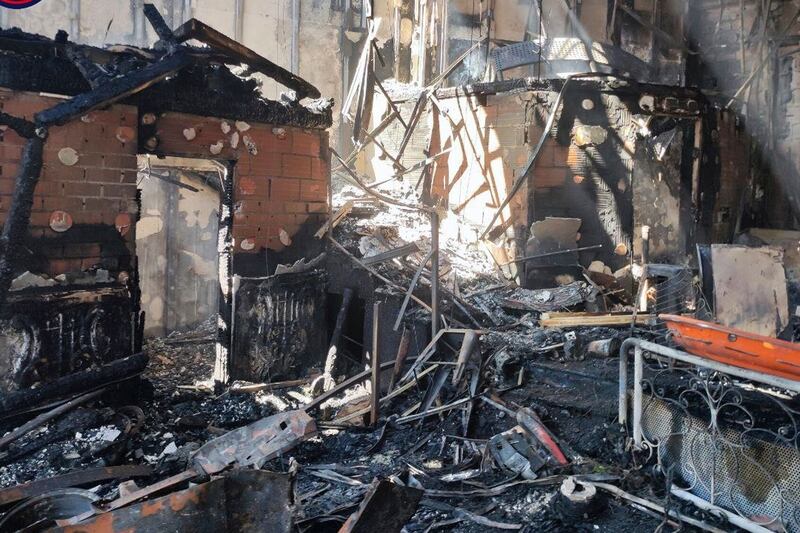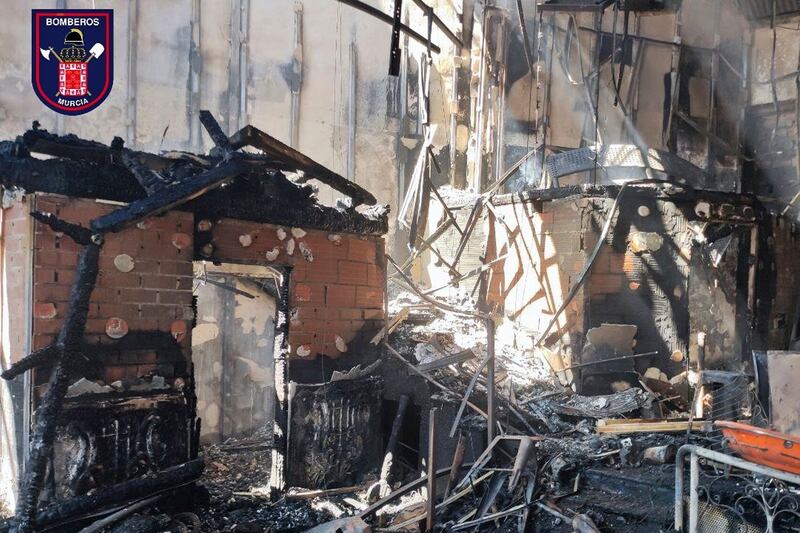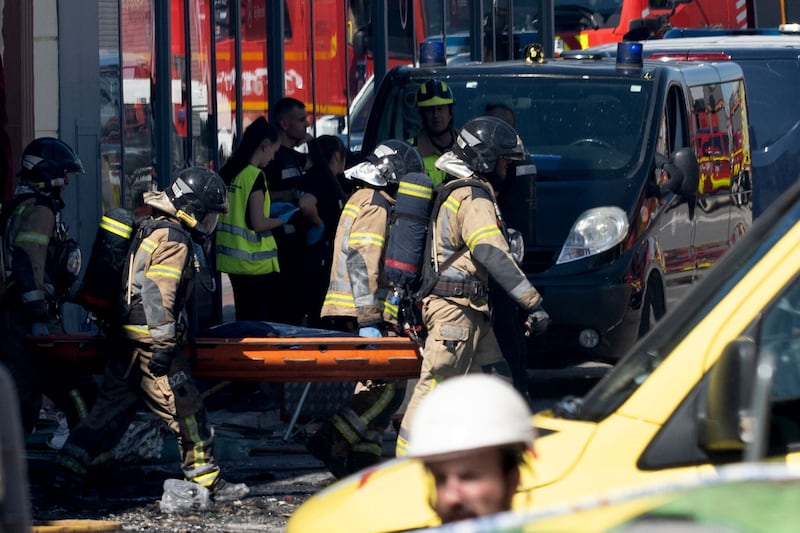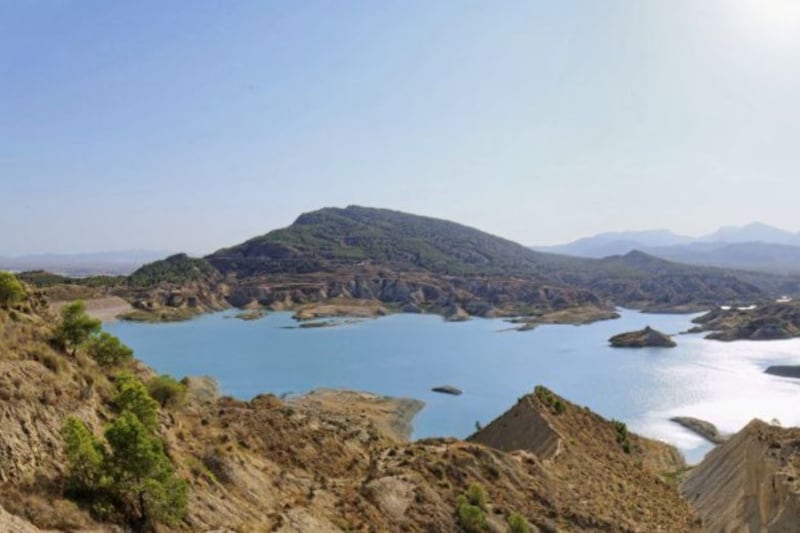AN ANCIENT sea floor pushed upwards over millions of years formed Barrancos De Gebas which lies about an hour’s drive out of Murcia city. Barrancos means ravines and dozens of them – chalky white, rising and falling away from one another – give this place an other-worldly feel.
Despite the sparse vegetation, earning it the title of The Badlands, it is a rich habitat for hundreds of butterflies and moths. It has been a protected area since 1995 and its unique desert landscape shimmers with an eerie whiteness in the morning sun.
The barrancos form a hinterland for Sierra Espuña, which in contrast sees lush green forests rising along a series of not-too-high but impressive mountains.
The greenery of this area is thanks to an early 20th century environmentalist called Ricardo Codorníu y Stárico who realised that deforestation was causing catastrophic erosion and he oversaw a massive replanting programme.
Although the slopes had originally been covered with Holm oaks, he decided to use much quicker growing Aleppo pines to prevent the deterioration in the soil base and the mountains becoming an arid landscape.
A visitors’ centre named after Codorníu is the starting point for a network of graded walking and cycling trails though Sierra Espuña regional park. Around 146km of trails meander through the forests, some running for just a few kilometres over undulating hills while others are more demanding.
Some of the trails are dedicated to cyclists and Espuña is one of the stages for Vuelta España.
For walkers the most challenging trail is a three-hour hike up to the 1,583m Morrón de Espuña – although a military base on the summit means you can’t actually get to the top. Never the less, there are viewing points that, on a clear day, allow you to see the Sierra Nevada in Granada and Sierra de Maria in the neighbouring region of Almería.
Living in among the trees are foxes, wild cats and lizards, while eagle owls and golden eagles hover above. However, be warned: don’t move any rocks as they might be the hiding place for poisonous snakes.
Around the summit is a series of man-made stone structures dug deep into the ground. These were snow wells and were once used to make blocks of ice by digging snow during the winter months and packing it tightly by foot and then covering it with grasses, before adding another layer and packing it down as well. The ice blocks were then transported by mule down the mountains to nearby towns and cities.
For those who are seeking a ghostly experience, the former Sanatorio de Sierra Espuña on the lower slopes of the park is said to be haunted by many of those who died from tuberculosis and is now a something of a draw for Spanish ghost-hunters.
Things get noisy in Mula around Easter time when the town hosts the Night of the Drums. Starting at midnight on Easter Tuesday in the square beside the town hall, it continues through the night until well into the Wednesday afternoon. The drummers come from throughout the region and most wear black tunics with pointed hoods.
Despite the religious history of the festival, it can get quite competitive when a pángana takes place – a showdown between drummers who compete with one another to play most skilfully and for the longest.
Mula’s museum, located in a former convent and hospital, has exhibitions and drums that give you a taste of the drumming festival as well as a history of the region where traces of human settlements dating from around 130,000 years ago, including cave paintings, have been found.
The town's looping, narrow streets twist upwards from its Plaza Mayor towards the Church of Santo Domingo where the view opens out over Mula and into the surrounding countryside.
Underground thermal springs flowing up through fractures in the ground saw the development of the nearby town of Alhama de Murcia, which became a spa resort for the Romans and in later centuries the Moors. The thermal complex of baths and saunas, which was later adapted by the Arabs, has been excavated.
High over the town on a rocky outcrop sits an 11th century Moorish castle, which is a short, sharp hike of about 1.5km from the town.
To get a fuller picture of the Roman influences on this part of Spain, take a trip to the coastal city of Cartagena where an amphitheatre and forum have been excavated. This is a walk through history where remains and visual displays recreate a sense of time and place.
Over the centuries the site of the theatre and the bricks and columns from which it was built were incorporated by subsequent settlers – the Visigoths, the Moors and Christians.
Access to the theatre is through a museum which, along with the Roman remains themselves, gives an insight into how wave upon wave of settlers made their mark on this area, using the site of the Roman theatre and its structure for their own ends.
The regional capital, Murcia city, was founded by the Arabs in 825 on the banks of the Segura River. Its compact historic centre has over the centuries expanded beyond the protective walls that once surrounded it.
It is deceptively small and its maze-like streets can be disorientating and have you wandering in circles. The cathedral has the second highest belfry in Spain and a climb to the top gives superb views over Murcia. Its side chapels were built by noble families who earned their wealth during the reconquest of Spain in the 16th century.
Nearby is the stunning museum of Santa Clara where Islamic art and architecture blend in with more recent Christian heritage in this former Moorish palace which was adapted to become a cloistered convent.
The Royal Casino is not as the title suggests a gambling den but a former exclusive gentlemen’s club with more than a dozen salons, each intricately decorated in a dozen different themes – including, neoclassical, Moorish and art nouveau. It incorporates a ballroom, a ladies room and Salón de Armas, where fencing used to take place.
Finally, in a sign of changing times in Spain where old traditions are given a new, contemporary twist, Murcia has started to gain a reputation as the county’s vegetarian tapas capital. While the traditional meat and fish fests that are normally associated with tapas are readily available, a number of restaurant have gone meat-free.
El Jardín de los Dragones (the dragon’s garden) is located, rather symbolically, close to Murcia’s bull ring. Its menu is vegan, with all the produce locally sourced and all the flavours associated with Spain mixed up with the occasional Indian and Asian twist.
FACT FILE
:: Tony flew to Murcia courtesy of Ryanair. The budget airline operates flights from Dublin to Murcia’s San Javier Airport. See ryanair.com to check out prices. As always with Ryanair, a bit of flexibility on dates can deliver some remarkably cheap deals.
:: The cost of bringing a bike is €60 per flight.
:: A taxi from San Javier Airport to Murcia city should cost around €60. However, if exploring the region car hire is your best bet.
:: To stay, try the centrally located NH Amistad Murcia
:: For more information visit https://www.murciaturistica.es/








